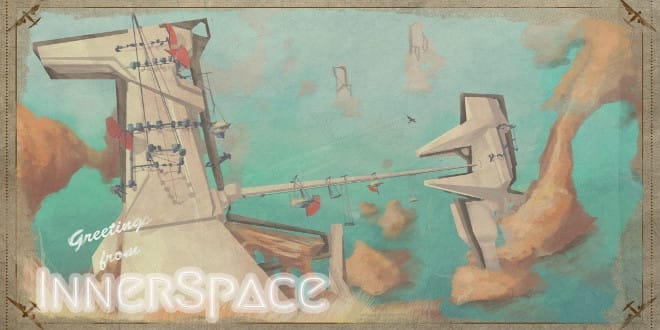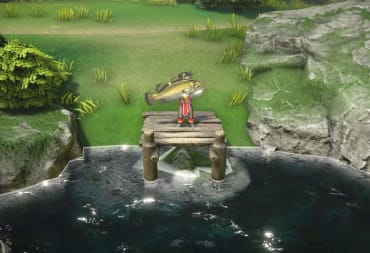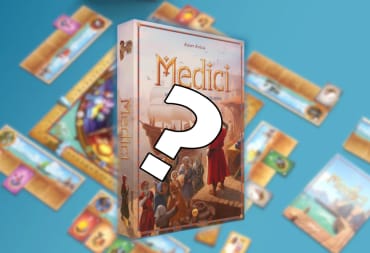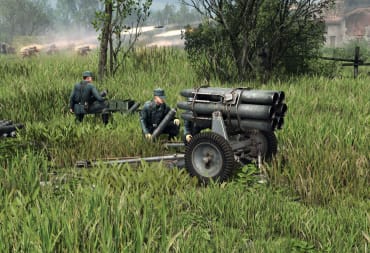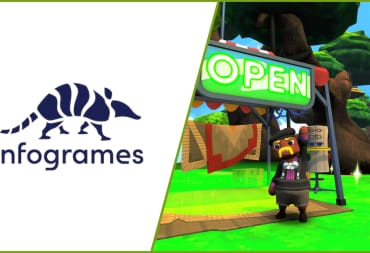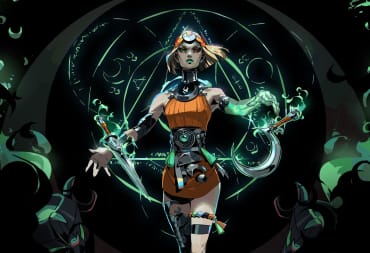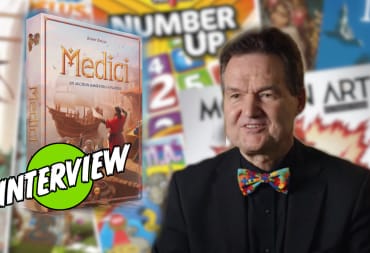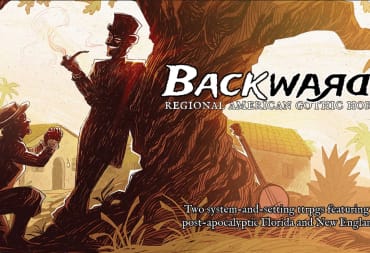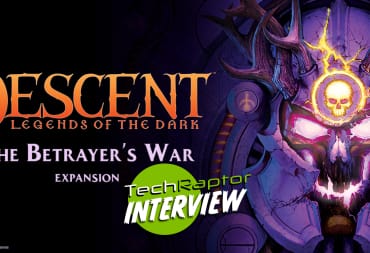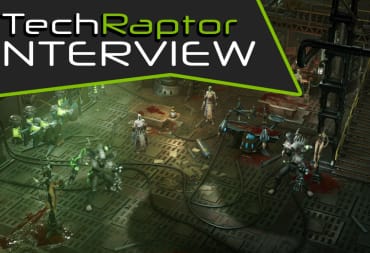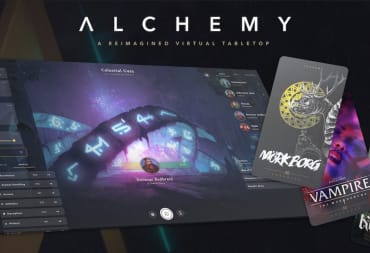InnerSpace is one of the more interesting games currently on Kickstarter and was covered in our Kickstarter article last week. With only a few days left, I had the chance to talk with the team via email after that and ask them some questions about the game – a flight exploration game on a unique world. I’d like to thank them all for answering the questions in-depth – I wasn’t expecting the whole team to reply when I sent them in for sure!
TechRaptor: You named Proteus, Crimson Skies and Shadow of the Colossus as games that inspired InnerSpace. What about them particularly inspired you?
Nick Adams, 3D Artist: Crimson Skies is probably the most underrated flying game of our generation. I remember dog fighting for hours with their unique planes and there unique controls. It was the first game that using inverted controls made sense. Combined with their ascetic this game was true an outlier to me. Shadows of the Colossus this game is truly something to behold. The inspiration here was definitely from there environments and how that corresponded with discovery. The realization that the only animals you encounter in the environments other than the geckos were near the colossi is a monumental moment that maybe you as the player are killing life. The way the colossi jerk around and writhe in pain when you stab them and are climbing on them is a sign that maybe you aren't doing a good thing here. They don't force feed you these answers however you have to discover these queues and reactions for yourself by taking in the environment and observing the colossi. Steve Zapata, 3D Artist: Proteus is, to me, an experiment in minimalist exploration. The game very much builds off of an understanding that humans have an inerrant desire to explore. It gives its players no prompt, no motive narrative framing, it just puts them in the world and says "go." It shifts the focus away from an overt frame narrative which results in the player having a greater focus on the subtly and nuance of their surroundings. This is a beautiful thing. Eric Grossman, Concept Art Crimson Skies has a unique kind of speed and energy to it that we don't really find in a lot of games today. We certainly have more space and flight sims than before, but these are often geared towards an immersive experience in the cockpit rather than delivering an experience centered on speed, movement, and aerial acrobatics. We love this kind of movement, and wanted to bring it into a new context. This is where Proteus and Shadow of the Colossus come in. While flight, agility, and speed are our mechanical basis, we wanted to look beyond dog-fighting as a venue for flight, so we focused on exploration. Both Proteus and SoC ask the player to move through their worlds and to extract meaning or understanding from their surroundings, even though the end-goal differs widely between these games. SoC is perhaps the biggest influence on how we're creating our narrative and setting. In SoC, there's little overt storytelling, and the gameplay itself conveys a great deal of emotion. The struggle between player and colossus is realized directly, rather than through cutscenes. This emergent narrative, which relies heavily on player interpretation, is something we've put at the core of our storytelling approach in InnerSpace. Tyler, Creative Director/Programmer For Crimson Skies it's the controls, I've always loved its disregard for directionality and mandate to bank into turns. It left an impression on me and it's a control-scheme is something I'm yet to experience since. Aside from that, I'm not sure if I'd reference the game much further than that... Proteus did visual story-telling really well, it made something as simple as chasing a rabbit entertaining for unnaturally long periods of time. It set a really great mood, we'd love to set a tone, not similar, but as well executed as Proteus. I also love minimalist soundtracks (Proteus uses the soundscape as it's soundtrack). As for Shadow of the Colossus, its story-telling and general mood is something I'm just outright a huge fan of. I would never change a thing about SotC, but I have always wondered what it would be like if the game had more to do and explore in the vast emptiness the game provides you. What kind of game it would have shaped up to be. What if Banjo Kazooie's mass amounts of jiggies were all unique items with lore that had a deep impact on the universe (like many of Dark Souls items). There is a lot of inspirations for this game, and those three only just touch the surface. I thrive to make games I'd like to play, and those three are three games I've found myself playing a lot recently.TechRaptor: When people hear ‘Crimson Skies and Shadow of the Colossus’ as inspirations when discussing it I get some weird looks. What led you to marry these disparate ideas?
Nick That is a good response I suppose because in a way it means people haven't heard of or played anything like this before. We hope to not only deliver that but deliver it in a way that our fans are confident in our abilities to make something so weird. We mostly just want to create an exploration flying game and at least to the majority of our group you don't say I want to make a flying and exploration game without looking at what we consider the two great games of their respective genres. Steve I think more than anything it was an economical decision. When you look at flying games there are either simulators, or dogfighters. That's about it. So a flying game that was neither of those two things looked like a niche that we could fill. As a studio, I think our natural inclination is to build exploration/atmosphere heavy games, so that was default for us. From there we saw the niche in the market and our programmer presented the idea of doing a flying game. From there the two sides merged pretty organically. Eric G These are, indeed, two really different games, so it seems like an odd combination at first. Honestly, we didn't begin by looking for influences to build our game. Instead, we began with the premise of flight in a strange space. As we built out that idea, we started to think about the ways games communicate, and those that do so in interesting ways. Crimson Skies has a really interesting approach to flight, which includes tight controls and agility. We wanted to take that abstracted-but-precise model as the basis for our own gameplay. We found, though, that usually games tend to trap interesting ways of movement or experience in closed levels or combat scenarios. We felt that giving the player 3-dimensional freedom is best justified in an interesting, expansive setting, which led us to look at games rife with epic exploration. Shadow of the Colossus ties exploration into its encounters expertly, making its "combat" a close companion to its world, integrating naturally two activities which, in games, are often disparate. In sum, these dual influences actually work well together. One offers us a model for player interaction, while the other gives us hints as to how to build the game itself to use that movement model to lead naturally between activities and levels of tensions. Tyler We pitched a lot of games and I tend to pull inspiration from a lot of the films, books (including comics), and games I'm playing at the time or that I'm a life-long fan of. When we started brainstorming for InnerSpace we had a direction and tone we wanted to set, from there it was thinking of the mechanics and interactions that would fill this universe in a manner that was most entertaining. I'm a HUGE fan of Shadow of Colossus and Crimson Skies, so it probably arose from my deep adoration for those games to be honest. Eric Brodie, Producer I feel that people consider those two games as disparate because they consider the game as a whole, not as experience that’s an amalgam of various elements, mechanics, and other unique inspirations. Shadow of the Colossus, as an experience, is many things. It’s a game that meshes narrative and gameplay incredibly well, that tells a poignant story with a powerful theme without ever relying an intrusive narrative presentation. It’s also a game that has a relatively short game loop, in which every enemy encounter is a boss, successfully eschewing the dungeon to boss archetype that is so common in game design. It also uses a player character that travels on a horse and climbs giant monsters. I feel that as developers, it’s important to view games through a critical lens, in which we recognize the various pieces and understand why they successfully (or unsuccessfully, sometimes) coalesce into a collective whole.TechRaptor: Games more and more, especially those that focus on exploration tend to focus on photo-realism, while you seem to have intentionally gone the other way for a more surreal look. Why do you think this was the right way to go for InnerSpace?
Nick The idea is to make something that is timeless you can always go for realism but just as quickly as technology evolves so does our ability to make something look more real. We wanted to make a game that was as timeless as Super Mario Bros or any of those old pixel art games. Another reason for this art style is that we are literally transporting the player to another world they have never been before and at least for me it’s interesting to see how people respond to a new set of rules for how a world works than what is conventional I.E. what they grew up with (Earth). Steve InnerSpace is my first commercial game, but it is not my first commercial product. I've actually worked in the medical side of game development for about 2 years now, most of which has been focused on creating photo-realistic models for simulation purposes. I think understandably I wanted to do something different. While there is a joy in approximation, there is a greater joy in the exploration of potential. Non-realistic shading models and aesthetics represent a kind of endless potential and, in my opinion, are much more interesting to develop. Eric G. At Polyknight, we have a semi-motto, which is that we're strengthened by our limitations. In this case, we have a relatively small team working on a game with an expansive world. From the outset, we knew that a high amount of texture work would put serious strain on our resources without yielding much in the way of a unique aesthetic. So, in part, the inclination to look for an alternative artstyle when we began was the result of limitations. However, as the idea of InnerSpace developed, the artstyle took on new importance. In my opinion, games waste a lot of energy trying to achieve immersion through photorealism. As long as a game remains internally consistent, a player can sink into its world. Further, an art style carries the tone and can convey a lot of subtle meaning on its own. In InnerSpace, we wanted to communicate a sort of troubled tranquility. It's a world that has seen a lot of turmoil, but has long since settled into silence. The surreal quality of the architecture, color, and shadows suggest that this world exists in its own, somewhat suspended time. It also gets us closer to the expressive space of painting or illustration, where the colors and forms themselves- rather than the objects they refer to- go a ways in communicating a specific perspective. Tyler Well, there are 3 big factors here. 1. Shaders do a lot of work for us and it allows us to make simpler assets. As a small team this frees us to have high-quality assets that take less time, freeing us to make more things. 2. We, at a philosophical level, love the idea of making an expressionistic video-game. Colored shadows and different hues and tones instead of painting things as they are lit realistically. As a studio we want to make not only fun games, but experimental games that try new things. Our aesthetics are one of the key ways we plan on achieving this. 3. We're a bunch of artsy-fartsy college students and we like that kind of stuff.TechRaptor: Do you think flying games have driven people away with the focus on maintaining realism in things such as gravity and hitting obstacles?
Nick It's not that I think modern flying games have driven people away it would just seem that there is a very select group of people who are into flying planes they know and love. These people can name every fighter jet how fast they can move and what they have in there payload. In my opinion flying games have just catered to a very select crowd. I think InnerSpace will be different because it offers much more than flying in a world that might only be possible to explore in a fun way while getting to fly. We have also done everything we can to make the controls not seem limiting we want the player to truly have fun and not be able to do something because our controls told them not to. Steve Driven people away? I'm not sure I would put it that way. Flying games have certainly established a standard, but I don't think we've seen a lot of evolution in that formula for a while. I think the flying game market has gotten a little stale. Eric G Perhaps, but gaming is great because there's room for many different takes on the same subject. Simulations have a specific niche, and successful flight is the reward for overcoming challenges rather than the basic gameplay. The fact is, in real life flight is difficult, and unpowered flight is an eternal human dream. In games, we have the power to convey an infinite number of scenarios. Why be bound by normal rules? Tyler Potentially, I think there has been lowered interests in flying games all-together though and I'm not sure this is the fault of the industry. I think you may have hit the nail on the head though. There have been few flying games that focus on doing something interesting with the core-controls, instead they take a staple flying control setup and try to do something interesting beyond those controls. I think consumers have well indicated that this is a model they aren't particularly excited about. Eric B. Yes, absolutely. Flying games are often meant to simulate the experience of flying, which means the developers know the players are looking for an experience where physics feel correct. Unfortunately, someone who simply wants a fun experience is often left frustrated. Racing games suffer from this same conundrum. When looking at InnerSpace, the plane is simply the vehicle, but the experience is exploration and discovery. Because of this, the typical flying design didn’t fit. Players should imagine the open areas of Starfox 64 as a closer experience, where the rules of flight aren’t as important.TechRaptor: An inverted world seems like an odd idea, what led you to go that route?
Nick We have seen every flying game under the sun where you fly in a space that gives you boundaries and you wonder why can’t I fly over there it's just open ocean. Our environment solves this and it came about because we were discussing Bernoulli I don't remember what about probably flying as he created the equation to generate lift under a wing. Now when the player is flying around they can go anywhere they can see. The only place they can’t go is through the ocean floor but I think that is pretty understandable. Eric G. Initially, InnerSpace was conceived of as a subterranean game. Rather than open air, the player would drill through rock and emerge into caverns. As the idea developed, the cavern concept turned into the inverted spheres we have now, which include both open air and interior spaces. It is also a design decision related closely with our efforts to re-think the flying game. In almost all in-atmosphere flying games, the game itself almost always takes place in a cube, with ground on the bottom and invisible barriers at the other 5 faces. Up, and therefore content, is only in one direction. Placing the game on the exterior of a sphere solves one problem, but leaves you with empty sky in all directions but 1. With an inverted sphere, opportunities for exploration are maximized. Rather than look to the ground below, you can travel in any given direction and find something to do, a mystery to solve, or a space to explore. Ironically, putting the ground in all directions lifts the player's eyes to the sky. Tyler The anime Gurren Lagann, eventually physics wound up flipping outwards instead of just existing in little under-ground spheres with down-wards gravity. It just evolved a lot over-time and was already in the form of "inverted-planets" when I pitched the game to the others. A lot of day-dreaming and slow additions, it wasn't some flash of insight that came to any of us.TechRaptor: What games do you think most inspired you to become a game developer yourself?
Nick The games that inspired me were definitely games like Earth Worm Jim, Halo Combat Evolved, Anarchy Online, Digimon World, Harvest Moon Back to Nature, and World of Warcraft. Then later in my life I was reaffirmed with games such as Shadows of the Colossus, Mass Effect, Journey, Dawn Of War, Table Top Warhammer 40k, and so many more. Steve Metroid Prime, easy. I've of course drawn inspiration from many other games (vvvvvv, God of War, WInd Waker, Flower, etc.), but it always seems to come back to Prime. At the time it was one of the most wonderfully intricate and detailed games I had ever experienced. It made me feel like I was in that world, doing all the things that Samus was doing. I think it was truly ahead of its time as it relates to the exploration Genera. While it has an overt narrative, I never felt like it was being force-fed to me. Instead, the game let me discover its depths, I found the story in the lore and locals that I explored, I caused the Space Pirates to retreat, I avenged the fallen Chozo race. The game never took control away from me, it let me do and achieve all of these things. I think, more than anything, that feeling of immersion and autonomy is what I've taken from Metroid Prime, and it's what I want to inject into InnerSpace. Eric G. This is tricky. My first game was Age of Empires, and one of the first things I did was open the scenario editor to make my own maps. I've been interested in drawing and creating new worlds from a young age. I don't know if I can point to any single game, but I think Legos are at the heart of my construction fixation. Tyler Every single one I've played. The good ones, the bad ones, the mediocre ones, and even the ones that are great that I didn't particularly enjoy. I will first and foremost list Rare as an inspiration though, as a youngster and even as an adult their games have always filled me with a deep sense of comfort and entertainment. The fact that Microsoft has caused them to become what they are today hurts me deeply. Eric B Red Dead Redemption, the Uncharted series, and Heavy Rain come to mind immediately. These games truly represent steps forward in how to integrate narrative into a game properly. Heavy Rain is particularly interesting to me, as it’s a neat experiment that attempts to shift the way stories are told. The element of interaction of our medium is incredibly powerful, and we’re still discovering new ways to utilize it. To me, games are just the next step in the history of human storytelling, an evolution that started with spoken word, moved to written texts, the stage, film, and then games. I don’t feel that games will ever replace novels or films, but are incredibly unique and can enhance those experiences as well as create their own. There’s a very good chance that interactive media will eventually be such a broad umbrella term that “game” won’t suffice to define everything within it. I’m incredibly intrigued by that and would like to be a part of that transition.TechRaptor: Is there anything else you'd like to add?
Eric G Games offer an opportunity to create living, detailed, and visually striking worlds that can be totally unbound by the rules of outside reality. For me, its this freedom of creation that makes games such an appealing medium. Tyler I hope marketplaces like Gog and Itch.io become more viable. I really like their business models and structure. Off-topic, I know, but the prospect of Steam bleeding us of 30% of our profits is killing me. Eric B. I feel that InnerSpace truly represents something special. It’s a rebuttal to the standards of players’ expectations when approaching genre. Within the same game is an exploration game that adds interactivity, and a flying game that hopes the player is observant of his or her surroundings. I feel that people should give to (and eventually play) InnerSpace because they want to be surprised by a game. If you’re looking for a break from the norm, InnerSpace may be exactly what you’re looking for.I’d like to thank everyone at Polyknight again for taking the time to answer these questions! InnerSpace is still on Kickstarter and is approaching $20 000 of its $25 000 goal with only a few days left. If this unique concept that they have sounds like something that might interest you, I suggest checking out their Kickstarter page and backing! You might also check out their company site with some other small games they've made in the past.
Have a tip, or want to point out something we missed? Leave a Comment or e-mail us at tips@techraptor.net
